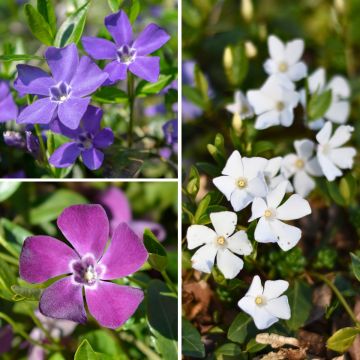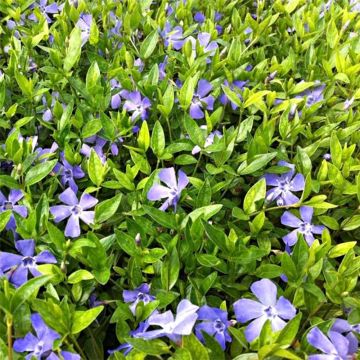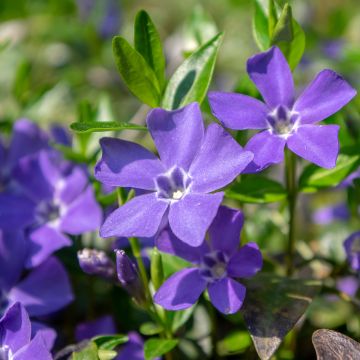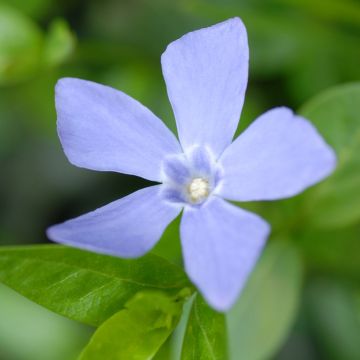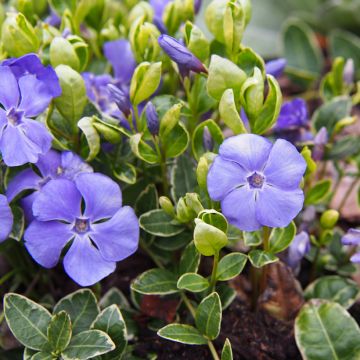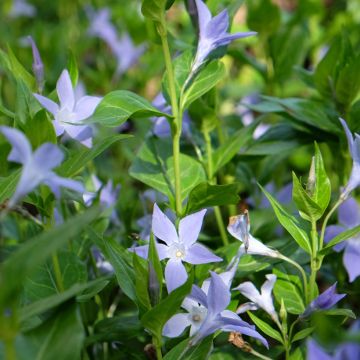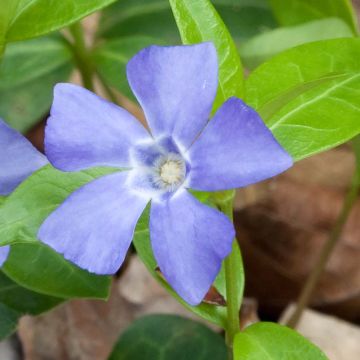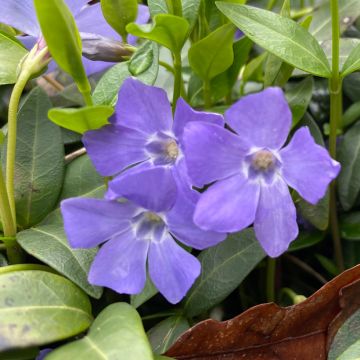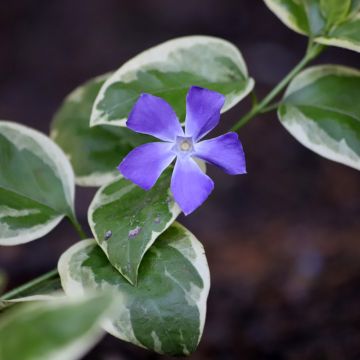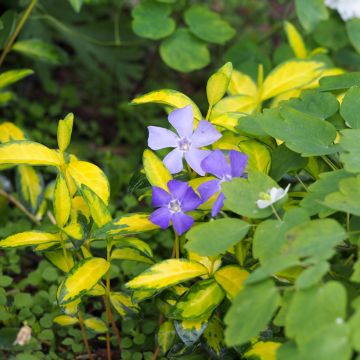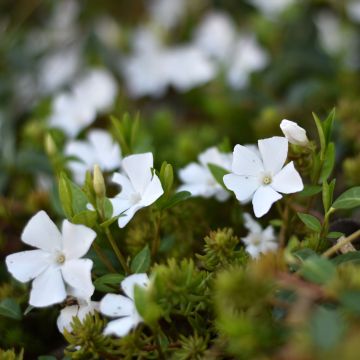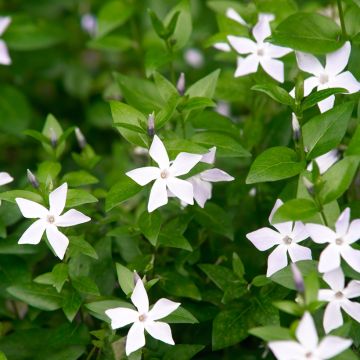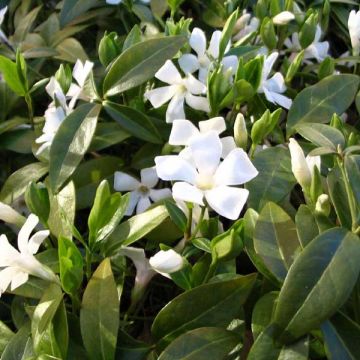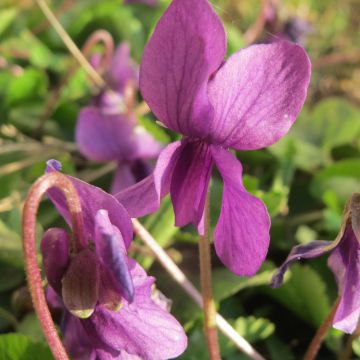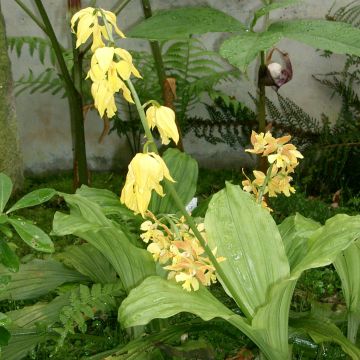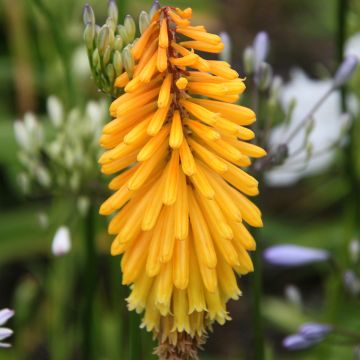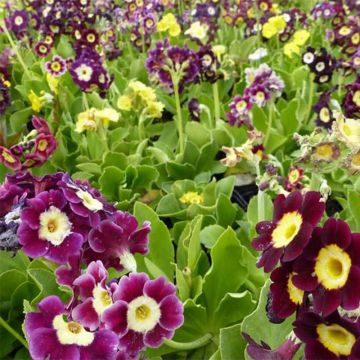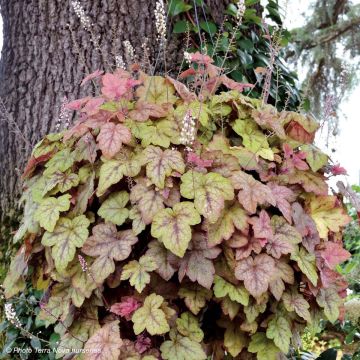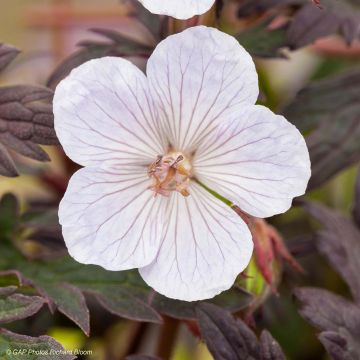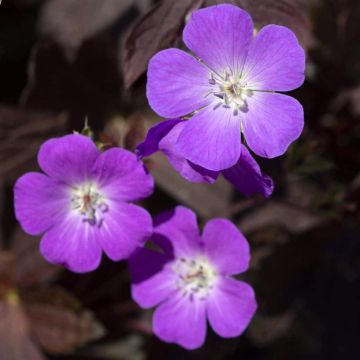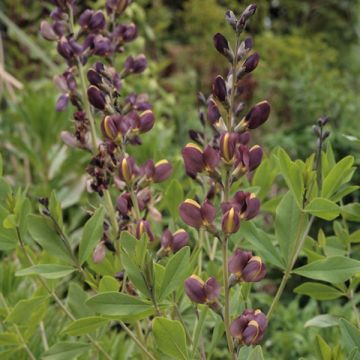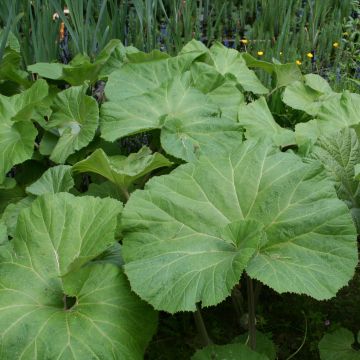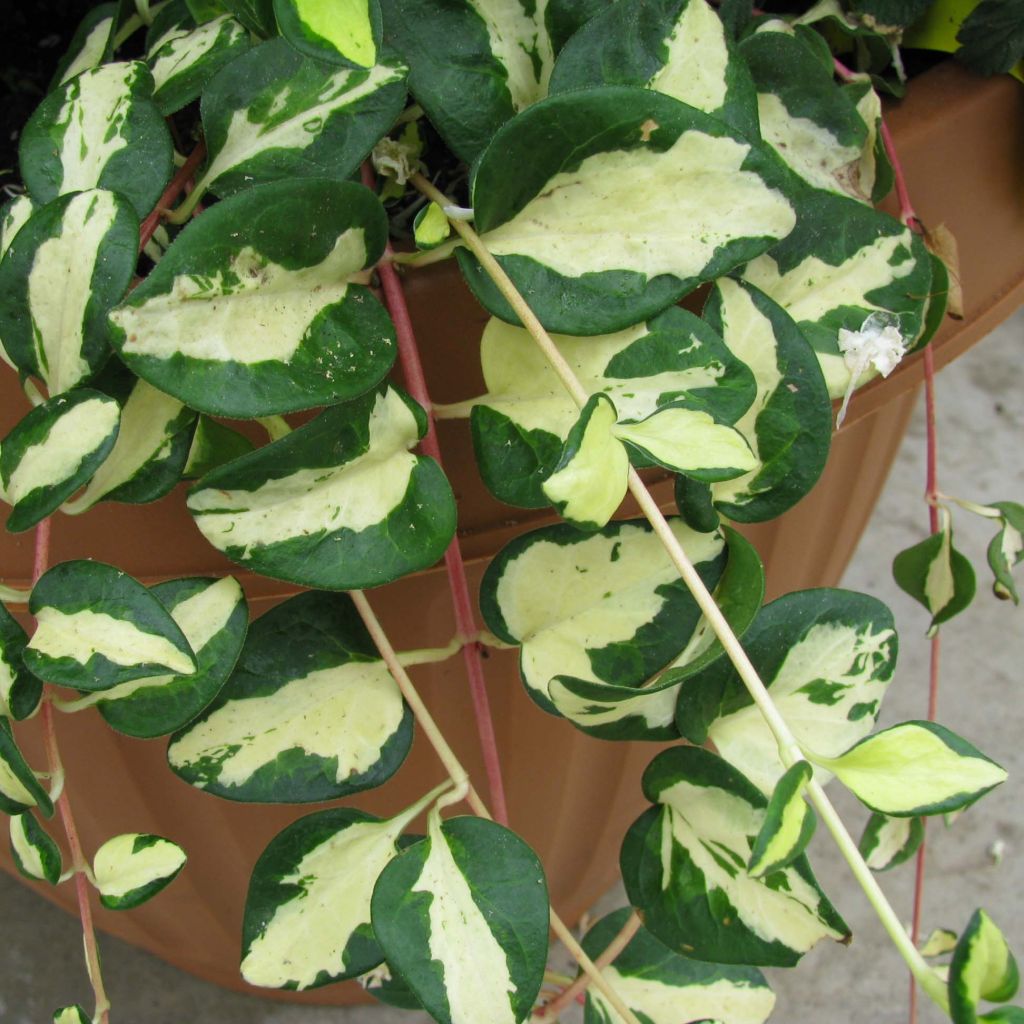

Vinca major Wojo's Gem
Vinca major Wojo's Gem
Vinca major Wojo's Gem
Grande Pervenche
Why not try an alternative variety in stock?
View all →This plant carries a 12 months recovery warranty
More information
We guarantee the quality of our plants for a full growing cycle, and will replace at our expense any plant that fails to recover under normal climatic and planting conditions.
From €5.90 for pickup delivery and €6.90 for home delivery
Express home delivery from €8.90.
From €5.90 for pickup delivery and €6.90 for home delivery
Express home delivery from €8.90.
Delivery to Corse prohibited: UE law prohibits the import of this plant from mainland France to Corse as part of the fight against Xylella fastidiosa. Please accept our sincere apologies.
More information
Does this plant fit my garden?
Set up your Plantfit profile →
Description
Vinca major 'Wojo's Gem' ('Wojo's Jem') is a large and particularly ornamental periwinkle, less invasive than the wild species. It develops long flexible stems covered with evergreen leaves light yellow to white-cream, marginated with dark green, which are quite unusual and particularly bright. It blooms in spring, producing the beloved periwinkle stars in blue... that we all love. Its somewhat bushy growth will enthusiastically cascade from hanging baskets, or creep between the roots of trees, in poor soils, even in the sun.
The greater periwinkle (Vinca major) is a creeping perennial with woody stems from the Apocynaceae family, native to central and southern Europe. It populates woods, hedges, rocks, or even dry and sunny meadows, and can sometimes be invasive. It is an extremely robust and truly undemanding plant, with foliage that remains evergreen in winter.
'Wojo's Gem' stands out with its bright and original variegated foliage. This plant develops from a woody climbing stem base, producing initially erect and then trailing stems, forming a fairly dense creeping tuft 40 cm (16in) in height and 80 cm (32in) or more in spread. In contact with the ground, the stems produce vigorous roots that allow this plant to continue its lateral growth. The stems bear opposite, ovate leaves, mostly cream-yellow in the centre, irregularly margined with green. This variety blooms in April-May, producing solitary terminal flowers, with a characteristic violet-blue colour, composed of five square, asymmetrical petals.
Periwinkles are useful groundcovers, sometimes invasive. They will spread even in shaded areas, although they may be slightly less floriferous. They eventually form thick intermingled mats, effectively covering the ground under trees or bushes. They thrive very well in not too arid rockeries or along pathways. 'Wojo's Gem' combines usefulness with beauty by adding a touch of elegance to the less favorable areas of the garden. It also naturalises quite easily in partial shade, alongside bear's breeches, perennial bloody cranesbill, Comfrey Hidcote Blue, Jerusalem sage Samia or Kenilworth ivy (Cymbalaria muralis), in a somewhat wild understory. The 'Gloire de Marengo' ivy, with its fabulous grey-green leaves variegated with cream, will form a beautiful combination with Vinca major 'Wojo's Gem' in regions where winters are not too harsh.
Report an error about the product description
Vinca major Wojo's Gem in pictures
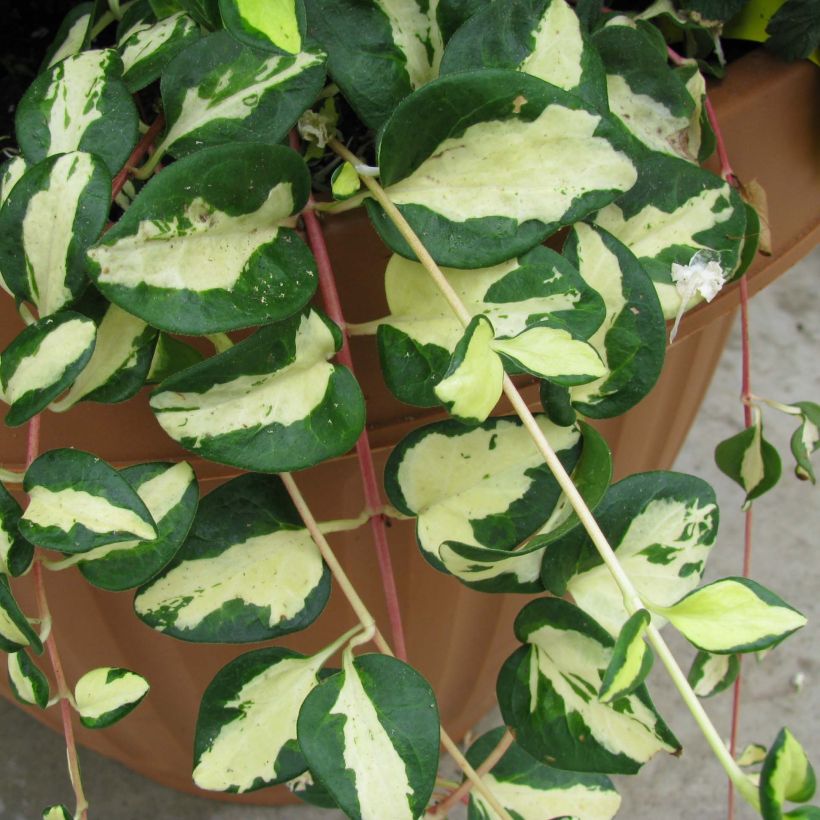

Flowering
Foliage
Plant habit
Botanical data
Vinca
major
Wojo's Gem
Apocynaceae
Grande Pervenche
Cultivar or hybrid
Other Vinca - Periwinkle
Planting and care
Periwinkles grow in any type of fresh soil in winter and spring, and are more beautiful in soil that doesn't dry out, even though they tolerate summer drought and don't need watering at all in summer, even in the Mediterranean region where they grow in shade. Intense drought will cause the foliage to wilt, but the plant will bounce back as soon as the rains return. They thrive in all positions, with a preference for partial shade, variegated foliage showing more brilliance in the sun, but dreading scorching exposures. They tolerate limestone and poor soils perfectly. If it becomes too invasive, prune the shoots with shears at the end of winter to limit their growth, and remove rooted shoots at the nodes.
Planting period
Intended location
Care
This item has not been reviewed yet - be the first to leave a review about it.
Spring flowering perennials
Haven't found what you were looking for?
Hardiness is the lowest winter temperature a plant can endure without suffering serious damage or even dying. However, hardiness is affected by location (a sheltered area, such as a patio), protection (winter cover) and soil type (hardiness is improved by well-drained soil).

Photo Sharing Terms & Conditions
In order to encourage gardeners to interact and share their experiences, Promesse de fleurs offers various media enabling content to be uploaded onto its Site - in particular via the ‘Photo sharing’ module.
The User agrees to refrain from:
- Posting any content that is illegal, prejudicial, insulting, racist, inciteful to hatred, revisionist, contrary to public decency, that infringes on privacy or on the privacy rights of third parties, in particular the publicity rights of persons and goods, intellectual property rights, or the right to privacy.
- Submitting content on behalf of a third party;
- Impersonate the identity of a third party and/or publish any personal information about a third party;
In general, the User undertakes to refrain from any unethical behaviour.
All Content (in particular text, comments, files, images, photos, videos, creative works, etc.), which may be subject to property or intellectual property rights, image or other private rights, shall remain the property of the User, subject to the limited rights granted by the terms of the licence granted by Promesse de fleurs as stated below. Users are at liberty to publish or not to publish such Content on the Site, notably via the ‘Photo Sharing’ facility, and accept that this Content shall be made public and freely accessible, notably on the Internet.
Users further acknowledge, undertake to have ,and guarantee that they hold all necessary rights and permissions to publish such material on the Site, in particular with regard to the legislation in force pertaining to any privacy, property, intellectual property, image, or contractual rights, or rights of any other nature. By publishing such Content on the Site, Users acknowledge accepting full liability as publishers of the Content within the meaning of the law, and grant Promesse de fleurs, free of charge, an inclusive, worldwide licence for the said Content for the entire duration of its publication, including all reproduction, representation, up/downloading, displaying, performing, transmission, and storage rights.
Users also grant permission for their name to be linked to the Content and accept that this link may not always be made available.
By engaging in posting material, Users consent to their Content becoming automatically accessible on the Internet, in particular on other sites and/or blogs and/or web pages of the Promesse de fleurs site, including in particular social pages and the Promesse de fleurs catalogue.
Users may secure the removal of entrusted content free of charge by issuing a simple request via our contact form.
The flowering period indicated on our website applies to countries and regions located in USDA zone 8 (France, the United Kingdom, Ireland, the Netherlands, etc.)
It will vary according to where you live:
- In zones 9 to 10 (Italy, Spain, Greece, etc.), flowering will occur about 2 to 4 weeks earlier.
- In zones 6 to 7 (Germany, Poland, Slovenia, and lower mountainous regions), flowering will be delayed by 2 to 3 weeks.
- In zone 5 (Central Europe, Scandinavia), blooming will be delayed by 3 to 5 weeks.
In temperate climates, pruning of spring-flowering shrubs (forsythia, spireas, etc.) should be done just after flowering.
Pruning of summer-flowering shrubs (Indian Lilac, Perovskia, etc.) can be done in winter or spring.
In cold regions as well as with frost-sensitive plants, avoid pruning too early when severe frosts may still occur.
The planting period indicated on our website applies to countries and regions located in USDA zone 8 (France, United Kingdom, Ireland, Netherlands).
It will vary according to where you live:
- In Mediterranean zones (Marseille, Madrid, Milan, etc.), autumn and winter are the best planting periods.
- In continental zones (Strasbourg, Munich, Vienna, etc.), delay planting by 2 to 3 weeks in spring and bring it forward by 2 to 4 weeks in autumn.
- In mountainous regions (the Alps, Pyrenees, Carpathians, etc.), it is best to plant in late spring (May-June) or late summer (August-September).
The harvesting period indicated on our website applies to countries and regions in USDA zone 8 (France, England, Ireland, the Netherlands).
In colder areas (Scandinavia, Poland, Austria...) fruit and vegetable harvests are likely to be delayed by 3-4 weeks.
In warmer areas (Italy, Spain, Greece, etc.), harvesting will probably take place earlier, depending on weather conditions.
The sowing periods indicated on our website apply to countries and regions within USDA Zone 8 (France, UK, Ireland, Netherlands).
In colder areas (Scandinavia, Poland, Austria...), delay any outdoor sowing by 3-4 weeks, or sow under glass.
In warmer climes (Italy, Spain, Greece, etc.), bring outdoor sowing forward by a few weeks.

































